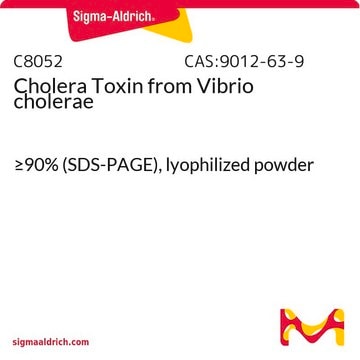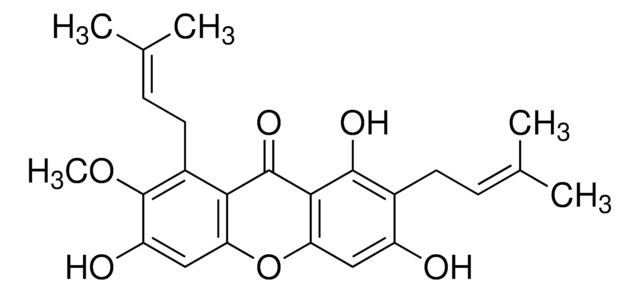D5817
DMXAA
≥98% (HPLC), solid, apoptosis inducer
Sinonimo/i:
5,6-Dimethylxanthenone-4-acetic Acid, ASA404, Vadimezan
Scegli un formato
Scegli un formato
About This Item
Prodotti consigliati
Nome del prodotto
DMXAA, ≥98% (HPLC), solid
Livello qualitativo
Saggio
≥98% (HPLC)
Stato
solid
Colore
light brown
Solubilità
DMSO: soluble >10 mg/mL
Temperatura di conservazione
2-8°C
Stringa SMILE
Cc1ccc2C(=O)c3cccc(CC(O)=O)c3Oc2c1C
InChI
1S/C17H14O4/c1-9-6-7-13-15(20)12-5-3-4-11(8-14(18)19)17(12)21-16(13)10(9)2/h3-7H,8H2,1-2H3,(H,18,19)
XGOYIMQSIKSOBS-UHFFFAOYSA-N
Descrizione generale
Applicazioni
Azioni biochim/fisiol
Caratteristiche e vantaggi
Avvertenze
Warning
Indicazioni di pericolo
Consigli di prudenza
Classi di pericolo
Acute Tox. 4 Oral - Aquatic Acute 1
Codice della classe di stoccaggio
11 - Combustible Solids
Classe di pericolosità dell'acqua (WGK)
WGK 3
Punto d’infiammabilità (°F)
Not applicable
Punto d’infiammabilità (°C)
Not applicable
Dispositivi di protezione individuale
dust mask type N95 (US), Eyeshields, Faceshields, Gloves
Scegli una delle versioni più recenti:
Certificati d'analisi (COA)
Non trovi la versione di tuo interesse?
Se hai bisogno di una versione specifica, puoi cercare il certificato tramite il numero di lotto.
Possiedi già questo prodotto?
I documenti relativi ai prodotti acquistati recentemente sono disponibili nell’Archivio dei documenti.
I clienti hanno visto anche
Articoli
Cell cycle phases (G1, S, G2, M) regulate cell growth, DNA replication, and division in proliferating cells.
Apoptosis regulation involves multiple pathways and molecules for cellular homeostasis.
Active Filters
Il team dei nostri ricercatori vanta grande esperienza in tutte le aree della ricerca quali Life Science, scienza dei materiali, sintesi chimica, cromatografia, discipline analitiche, ecc..
Contatta l'Assistenza Tecnica.
















